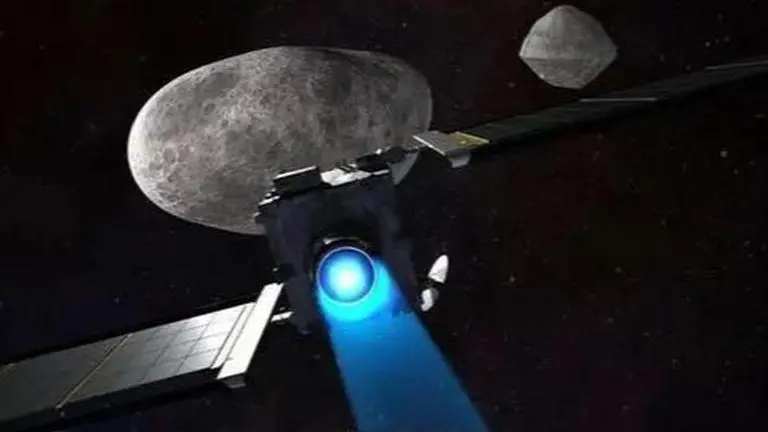Updated 1 September 2022 at 19:38 IST
NASA's DART to collide with asteroid in 60 days; know what happens after the impact
NASA launched the DART spacecraft toward a binary asteroid system located 109 crore km from Earth. The spacecraft will collide with an asteroid in 60 days.
- Science News
- 2 min read

In about 60 days from now, NASA’s DART spacecraft will intentionally ram into an asteroid. Short for Double Asteroid Redirection Test, this mission intends to test the idea of asteroid deflection by slamming a spacecraft into a space rock to change its course. This idea would help if and when a mass-extinction level asteroid comes hurtling toward our planet.
In T minus *60* days time, @NASA and @JHUAPL's #DARTMission will impact the smaller of the 2 #Didymos #asteroids - and perform humankind's first orbital deflection for #PlanetaryDefense test. Next @ESA's #HeraMission will do its part... pic.twitter.com/fDkaTjWf44
— ESA Technology (@ESA_Tech) July 28, 2022
Recently, the European Space Agency (ESA) shared an illustration video of the collision that will transpire 109 crore kilometres away from Earth. The spacecraft will collide with an asteroid named Dimorphous (diameter 160-meter or 530-foot) which orbits a bigger asteroid named Didymos (diameter 780-meter or 2,560-foot). Interestingly, DART will be followed by another explorer named HERA in 2024 which is a contribution of ESA.
Developed as an asteroid detective, the probe will rendezvous with the asteroid system to examine the aftermath of the kinetic impact test of DART. It will perform a close-up crash scene investigation by sending out two CubeSats and measuring the crater left by DART's collision.
After @NASA's #DARTMission deflects its target #asteroid, @ESA's #HeraMission will follow in its footsteps to perform a close-up crash scene investigation, including measuring the crater left by DART's collision & sending out #CubeSats for a close up look https://t.co/rhV9zg6Uce pic.twitter.com/jimuvjhhDK
— ESA Technology (@ESA_Tech) July 28, 2022
HERA to examine the aftermath of the collision
The two CubeSats included in the HERA to examine the impact are Milani, the rock decoder and Juventas, the radar visionary. The probe would also photograph the spacecraft crashing into the asteroid since the latter's cameras would be destroyed after the collision. "Demonstrating new technologies from autonomous navigation around an asteroid to low gravity proximity operations, Hera will be humankind’s first probe to rendezvous with a binary asteroid system", ESA said in a statement.
Advertisement
Recently, a study, conducted by the University of Bern and the National Centre of Competence in Research (NCCR), claimed that the collision would destroy the asteroid much more severely than anticipated. Launched in November last year, the spacecraft will slam into Dimorphous at a speed of 23,760 kph to see if the impact changes the asteroid's position and orbital path.
The conclusion about the aftermath was drawn through simulations that took into account the post-impact shock waves and the cratering process along with the fact the Dimorphos has a loose core instead of a solid and densely packed one.
Advertisement
Published By : Harsh Vardhan
Published On: 29 July 2022 at 16:01 IST
